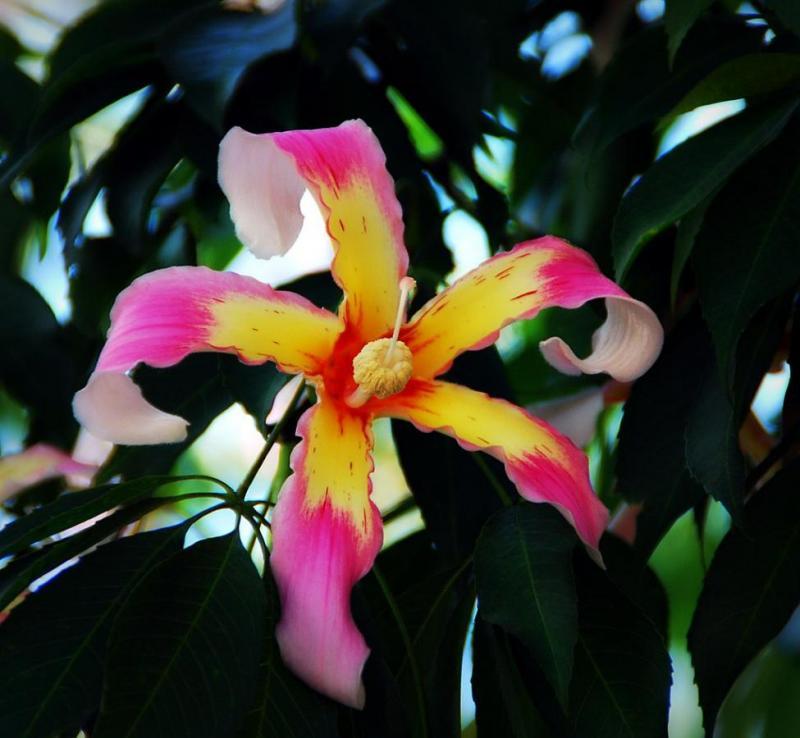Encyclia alata
Also known as: Winged Encyclia or Encyclia alata h.v. rossii Encyclia alata h.f. alba Epidendrum formosum Encyclia alata ssp. parviflora Epidendrum alatum var. grandiflorum Encyclia alata ssp. alata Epidendrum calocheilum Epidendrum alatum var. viridiflorum Encyclia alata h.v. majus Epidendrum alatum var. longipetalum Epidendrum belizense Epidendrum alatum var. parviflorum Epidendrum alatum Encyclia belizensis ssp. parviflora Encyclia belizensis ssp. belizensis Encyclia belizensis Epidendrum jeansonnei Encyclia dickensonianum Encyclia parviflora Encyclia alata ssp. virella Encyclia elata in the subfamily: Epidendroideae
Native to: Belize Campeche - Mexico Chiapas - Mexico Honduras
General Information
Winged Encyclia is a medium to large sized sympodial cool to warm growing epiphytic or terrestrial orchid belonging to the sub family Epidendroideae native to Belize, Mexico and Honduras.
Plant Description
Sympodial. Grows to 58cm. Each new growth has numerous leathery erect, rigid, lance shaped leaves that grow to 1-50cm long. Pseudobulbs grow to 13cm
Flowers
Numerous fragrant blossoms appear
Fragrance
The orchid is fragrant.
Substrate(s)
- Coarse
- Medium
- Bark
- Charcoal
- Perlite
Care Notes
This orchid goes into a dormancy phase during winter, during this phase it is best not to provide water unless the plant is starting to look thirsty. The lack of water increases the chance of flowering in spring, and also reduces the likelihood of any rot forming. Do not resume watering until new growth has appeared and is growing strongly.
Often a period of intense growth occurs after dormancy. During this time the amount of light, water and fertiliser the plant receives will directly impact the amount of growth that occurs during this time, and in the case of seedlings, will reduce the time required to reach maturity.
It's recommended to heavily reduce the water amount at the middle to end of autumn to trigger dormancy. Leaves on older bulbs will begin to drop during this time while the newer bulbs continue to mature until terminal leaves appear at the tip of the pseudobulbs.
Repotting can be done any time of the year though it's best to do it in early spring when new growth is appearing as this also means new roots will appear to help the plant anchor into the new media and offset any damage to established roots during the repotting process.
Fragrant:
- IsFragrant
Climate
Grows at low to high elevations. Rainfall ranges from 38mm to 508mm per day, heaviest in September and lightest in March. Humidity ranges from 82% to 90%, highest in January and lowest in April. Temperature ranges from 17C to 30C, highest in May (22C to 30C) and lowest in January (17C to 23C).
Watering
These orchids are sensitive to excessive watering and should only be watered when they look thirsty. Water infrequently and ensure that the roots are dry before watering. Keep an eye on them especially during hot weather as overwatering can lead to rot, whereas underwatering may result in wilting or shriveling, which while unattractive, will not kill the plant.
Keep moisture levels up during hot weather as the plant is prone to dehydrationFertiliser
dormant-medium-demand-orchid Apply fertiliser regularly at half strength year round. Use a high Nitrogen fertiliser during Spring and Summer. Use a high Phosphorous fertiliser during Summer.
Potting
These plants can be sensitive to repotting though should not require repotting regularly. Repotting should be done when the mix has broken down to the point that it doesn't absorb water or holds onto water for far too long, usually the plant shows a decline in growth as well. Repotting is best done after the growing season when the plant has died back.
The mix should be free draining, with a blend of 30% inorganic ingredients such as coarse sand, gravel or perlite, mixed in with about 70% organic ingredients such as peat, leaf litter or decomposed bark. Avoid commercial potting mixes as they can vary wildly and may contain "wetting agents" that can hold onto water for loo long, causing rotting and stunted growth.
This plant does very well in baskets or suspended pots This plant does well mounted to Cork slabs. Repotting is best done annually.





















